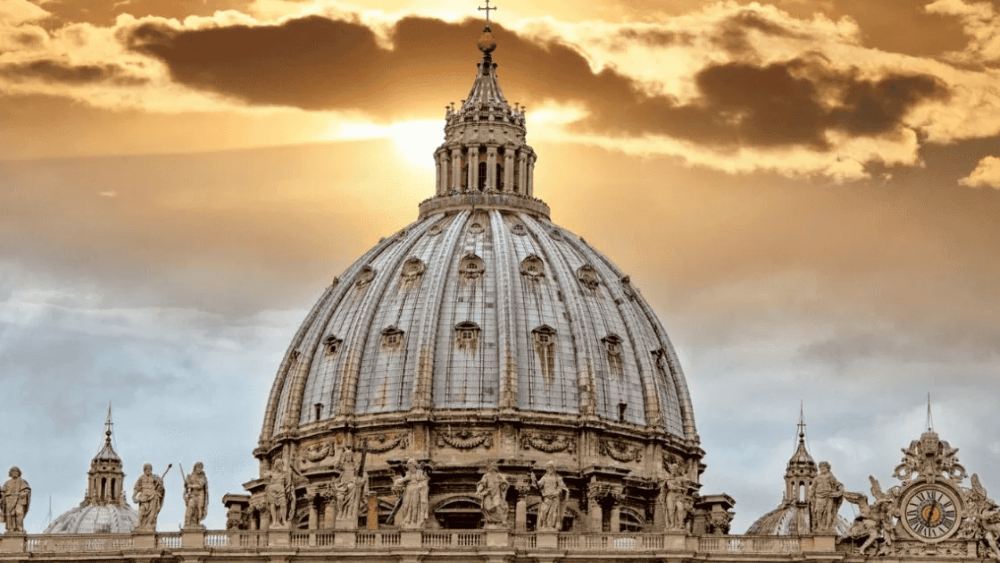ISABEL RUBIO ARROYO | Tungsteno
St. Peter's Basilica is not only the spiritual heart of Catholicism, but also a monument that encompasses centuries of art, architecture and mystery. From its origins in the time of Constantine to its underground nooks and passageways, this monumental temple continues to fascinate millions of faithful and visitors every year. Here are some of the most surprising and lesser-known facts about the world’s largest Christian church.
The history behind St. Peter's Basilica
The St. Peter's Basilica that we know today was not the first church to occupy this site. In the 4th century, Emperor Constantine commissioned a church to be built here, which stood for over a thousand years. However, it was not until 1506 that Pope Julius II decided to replace it with a new, monumental construction in tribute to the Apostle Peter, who is believed to have been buried on that very hill in the Vatican. Construction took almost 120 years and involved the participation of prominent Italian architects and artists such as Donato Bramante, Michelangelo and Raphael. While Bramante took inspiration from the Roman Pantheon for his initial design, Michelangelo was responsible for the iconic dome.
The imposing interior of St. Peter's Basilica. Credit: Fabbrica di San Pietro / St. Peter's Basilica
The largest Christian church in the world
This monumental work embodies the splendour of the Vatican. At 136.5 metres high, its dome is the tallest in the world. The interior covers more than 15,000 square metres and its total area extends to about 2.3 hectares. Recognised as a UNESCO World Heritage Site in 1984, it is considered the largest Christian church in the world.
View of the interior of the dome of St. Peter's Basilica. Credit: Fabbrica di San Pietro / St. Peter's Basilica
Saints welcome the faithful in the iconic St. Peter's Square
In front of the basilica, St. Peter's Square can host thousands of people. According to the Vatican's official website, Vatican News, more than 100,000 people attended Pope Leo XIV’s first greeting from the square. Designed by Gian Lorenzo Bernini, the square features an elliptical colonnade arranged in 284 columns in four rows, which symbolise the embrace of the Church. At its centre stands an Egyptian obelisk, flanked by two fountains. The square is adorned with statues of saints who welcome visitors and, according to the Vatican, represent the union between the heavenly and earthly churches.
St. Peter's Square and its iconic colonnade. Credit: Fabbrica di San Pietro / St. Peter's Basilica
The popes who rest beneath St. Peter's Basilica
Throughout history, St. Peter's Basilica has inspired numerous legends about hidden passageways and secret chambers beneath its structure. Beyond the myth, the truth is that there are several real underground spaces, such as the Vatican Grottoes and the Necropolis, which house ancient papal tombs. Although Pope Francis has chosen the Basilica of Saint Mary Major as his burial place, the remains of 91 popes lie beneath Saint Peter's. These papal tombs are located alongside those of members of royalty and nobility. Notable pontiffs buried here include emblematic figures such as Pius X and John Paul II. For archaeologists, this collection of tombs is a historical treasure of incalculable value.
The Vatican Necropolis. Credit: Fabbrica di San Pietro / St. Peter's Basilica
The Vatican's secret passageway
Very close to this monumental complex is the Corridor of Borgo, also known as the Passetto de Borgo, a fortified corridor connecting Vatican City with Castel Sant'Angelo. Although it doesn’t pass directly under the basilica, it forms part of the Vatican's defensive system and was constructed as an escape route for popes during times of crisis. The corridor’s most famous episode occurred during the Sack of Rome in 1527, when Pope Clement VII managed to escape through it and took refuge in the castle. According to Rome's Department of Major Events, Sports, Tourism and Fashion, “the Pope was saved by the skin of his teeth, running through the narrow corridor, while the courtiers and nobles who accompanied him protected him with a dark cloak to prevent his white robe from becoming an easy target.” Today, some sections of the Passetto can be visited on guided tours from Castel Sant'Angelo, revealing one of the most strategic and lesser-known corners of Vatican history.
View of the Passetto di Borgo from Castel Sant'Angelo in Rome. Credit: Rome's Department of Major Events, Sports, Tourism and Fashion
Tungsten is a journalistic laboratory that explores the essence of innovation.
